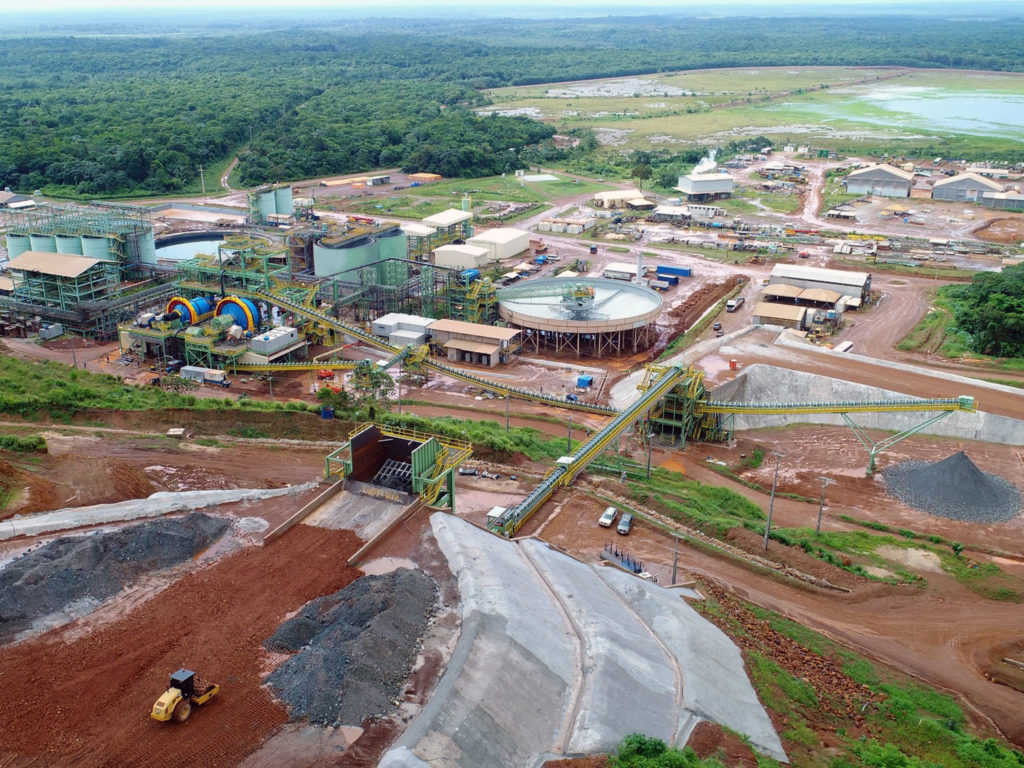Latest Commodity News

Venezuela-Cuba Oil Dynamics Amid U.S. Sanctions
oilprice.com
2025-12-14 23:00:00 UTCSecretary of State Marco Rubio emphasizes that weakening Cuba is essential for destabilizing the Maduro regime in Venezuela. The U.S. military's approach in the Caribbean involves 'gunboat diplomacy' intended to promote regime change in Venezuela. This strategy stems from a belief that cutting off support to Cuba would lead to a collapse of the Maduro regime, as reflected in statements from former and current government officials.
Recent reports indicate that the seized tanker Skipper, which was transporting crude oil for Cuba's state-run oil company, plays a significant role in the economic ties between Venezuela and Cuba. Historically, Cuba has relied on subsidized oil from Venezuela, while providing essential services, including medical assistance, in return. However, data shows that much of the oil previously allocated to Cuba has been redirected to China, generating crucial revenue for the cash-strapped island.
Panamanian businessman Ramón Carretero has emerged as a key player in the oil exchanges between the two nations, and his recent sanctions by the U.S. Treasury highlight ongoing efforts to disrupt these flows. The Skipper tanker, which also has a history with Iran, is now part of a broader strategy by the Trump administration to destabilize the Venezuelan regime. The careful management of these oil shipments may lead to significant economic ramifications for both Venezuela and Cuba.
The geopolitical implications of such strategies carry significant risks. While disruptions to crude oil flows could result in regional instability, reactions from China to these actions remain uncertain. Any potential fallout could affect diplomatic relations between the U.S. and China, particularly regarding future talks between the leaders of both nations.

Equinox Gold Sells Brazilian Operations for Over $1 Billion
mining.com
2025-12-14 22:09:27 UTCEquinox Gold has sold its Brazilian operations to China's CMOC Group for over $1 billion. This sale includes a 100% interest in three mines: the Aurizona mine in Maranhão, the RDM mine in Minas Gerais, and the Bahia complex, which consists of the Fazenda and Santa Luz mines. The company expects these assets to produce between 250,000 and 270,000 ounces of gold in the current year.
The deal consists of an upfront cash payment of $900 million due upon closing, with an additional contingent payment of up to $115 million linked to production one year after the sale. Equinox's CEO commented that this strategic move allows the company to focus solely on North America, presenting it as a strong gold producer with high cash flow and growth potential.
Even after the sale, Equinox Gold's portfolio will still include important mines in Canada and California, with expected combined production from these assets that nearly matches the output from the Brazilian operations. Furthermore, the sale aims to improve Equinox’s financial position by enabling debt repayment and enhancing cash flow for further organic growth opportunities.
The company anticipates significant production increases in the coming year, projecting to produce between 700,000 and 800,000 ounces of gold. A detailed production forecast will be provided in early 2026 as they work to maximize capacity across their mines.

China's Bullish Oil Import Data Points to Strong Demand Despite Concerns
oilprice.com
2025-12-14 22:00:00 UTCChina's recent oil import data shows a 5% increase in November year-on-year, indicating a strong demand for crude oil despite forecasts suggesting a slowdown. The country is also increasing its storage capacity to accommodate more oil, casting doubt on predictions of declining demand growth for oil. While some reports show a downward revision in apparent demand for October, analysts remain optimistic that China will boost its oil purchases next year due to its ongoing stockpiling efforts.
Forecasters predict that Asian oil demand will decrease slightly this year, followed by a minor rebound next year, with China being a major contributor to this trend. However, there are conflicting signals, as the country experiences a decline in car sales and electric vehicle (EV) sales, indicating potential challenges to oil demand growth fueled by the rise in EV adoption.
China is currently storing over 1.5 billion barrels of oil and is expanding its storage capacity further. It has been stockpiling at a rate of about 1 million barrels daily this year and plans to build new storage facilities to accommodate future demands. This increased stockpiling has contributed to the relative stability of oil prices, as it lowers the likelihood of dramatic fluctuations in the market.
While many experts are skeptical about global oil demand, the International Energy Agency recently revised its demand projections upward. The agency noted a decrease in total global oil supply, indicating that demand for oil might be stronger than previously expected. Despite prevailing doubts regarding future demand growth, China's actions could lead to new developments in oil markets.

Canada's New Oil Pipeline Proposal Faces Mixed Reactions
oilprice.com
2025-12-14 20:00:00 UTCCanada is considering the development of a new oil pipeline after previously scrapping the Keystone XL Pipeline due to environmental concerns. Support for the plan comes from Alberta, while environmentalists and Indigenous leaders express anxiety about its potential effects on land and local communities. This development signifies a departure from Canada’s recent energy policy focused on decarbonization and reducing fossil fuel reliance.
In November, Prime Minister Mark Carney signed an agreement to construct a new pipeline aimed at exporting Alberta's oil sands while exempting the oil industry from certain environmental regulations. This decision is part of a strategy to lessen Canada's trade dependency on the United States and boost non-U.S. exports over the next decade. Currently, over 90% of Canadian crude exports go to the U.S., making this shift significant for the national economy.
Although the proposal has garnered strong support from Alberta's government and a pledge of $10 million to advance the project, there are no private investors backing it yet. The pipeline would aim to transport at least one million barrels of crude oil per day to Asia, but it faces challenges, including reluctance from energy companies due to the difficulties of processing heavy crude. Additionally, concerns about lifting the moratorium on tanker traffic along British Columbia's coast have been voiced by various stakeholders.
Public opinion on the pipeline is mixed, with a recent poll indicating that 56% of Canadians are in favor of its construction, and 55% support lifting the tanker ban. However, Indigenous leaders and environmental advocates firmly oppose the development. The viability of the project will ultimately depend on securing private funding and addressing environmental safety concerns.

The Transforming Landscape of Data Center Cooling
oilprice.com
2025-12-14 18:00:00 UTCThe challenge of cooling systems in data centers is becoming increasingly critical as they account for nearly 40% of total energy consumption. With the projected value of the data center cooling market anticipated to reach $34.12 billion by 2033, the pressure on operators to enhance energy efficiency and meet stricter regulations is intensifying. This growth is largely attributed to a shift towards advanced cooling technologies needed for handling the extreme thermal densities produced by high-performance computing and AI workloads.
Conventional air-cooling methods are becoming insufficient as rack densities in hyperscale data centers rise sharply, with figures exceeding 20 to 30 kilowatts per rack and some AI setups pushing beyond 100 kilowatts. The rapid expansion of hyperscale facilities is propelling the demand for more effective cooling solutions like direct-to-chip and immersion cooling, fundamentally altering how new data centers are designed.
This transition is paired with wider energy concerns, with the International Energy Agency predicting that global data center electricity consumption could surpass 2,200 terawatt-hours by 2030. Regulatory pressures in North America and Europe are also shaping investment trends, emphasizing energy efficiency and sustainable practices. While North America remains a leader in the market, the APAC region is experiencing fast adoption driven by regional digital initiatives, indicating a significant shift in the global landscape of data center cooling.
Despite the benefits, high capital costs are a barrier to transitioning legacy facilities, which may require extensive retrofitting. The industry is responding with flexible solutions like modular cooling units, enabling phased upgrades. As the demand for high-performance applications increases, efficient heat rejection will be key to maintaining competitive advantage in the evolving digital economy.

Utah Mining Company Discovers Major Rare Earth Deposit
mining.com
2025-12-14 16:36:15 UTCA mining company in Utah has announced the discovery of a large deposit of rare earth minerals and critical materials, which could become a major project for North America. Ionic Mineral Technologies, abbreviated as Ionic MT, has confirmed that its Silicon Ridge site features an easier extraction method known as halloysite-hosted ion-adsorption clay (IAC). This geological formation is known to account for a substantial portion of the world's rare earth production, particularly heavy rare earth elements that are essential for various technologies.
Ionic MT describes the deposit as an 'IAC-Plus' profile, highlighting its enriched grades that include not only rare earths but also critical minerals such as gallium, germanium, and lithium. According to Andre Zeitoun, the founder and CEO, this discovery marks a pivotal moment for the United States in achieving resource independence, as it secures a domestic, shovel-ready source of essential minerals required across multiple sectors, including technology and defense.
The project is already prepared for production, with mining permits and a processing facility located in Provo, which will expedite the timeline to commercial operations. Ionic MT plans to produce three valuable outputs from its integrated business model: critical minerals, high-purity alumina, and nano-silicon. Furthermore, recent exploratory assessments provide promising grades of rare earth elements, indicating substantial potential for the project's expansion.
In terms of evaluating its economic prospects, Ionic MT has launched a preliminary economic assessment (PEA) of the Silicon Ridge project, which is expected to be finalized by mid-2026. The company has also enlisted Citigroup as a market adviser to facilitate its development goals.

India's Continued Reliance on Russian Crude Amid U.S. Sanctions
oilprice.com
2025-12-14 16:00:00 UTCSince the beginning of the conflict in Ukraine in 2022, the global energy landscape has undergone substantial changes as the U.S. and Europe implemented strict sanctions on Russian energy exports. This situation forced European nations to seek alternative sources of oil and gas, resulting in a marked reduction in imports from Russia. In response, Russia began offering its oil and gas at significantly reduced prices to countries like China and India, who subsequently stockpiled these discounted supplies.
President Trump expressed concerns over India's continued imports of Russian oil, threatening to impose tariffs on the nation for its energy purchases. Despite these threats, India's imports of Russian crude continued to rise, reaching a projected five-month high in November. The trend shows a stark contrast to the 2.5 percent of total oil imports from Russia before the invasion, which is expected to approach 50 percent by 2025, highlighting India's growing reliance on Russian energy.
During a recent summit between India and Russia, President Putin indicated that Russia is fully prepared to maintain consistent fuel shipments to India. He criticized the U.S. for its stance on India’s energy imports, noting that the U.S. continues to purchase Russian fuel for its nuclear power plants. Moreover, both nations finalized several agreements aimed at enhancing economic cooperation, including a target to double bilateral trade by 2030.
In the face of tightening sanctions on major Russian oil producers, India may need to adapt its supply sources. However, with the resurgence of other companies like Surgutneftegaz and Gazprom Neft stepping in, along with the use of shadow fleets to bypass restrictions, it appears that India's imports of Russian crude will persist. This situation underscores India's commitment to its energy security and economic interests, irrespective of external pressures.

Impacts of U.S.-Venezuela Tensions on Global Oil Industry
oilprice.com
2025-12-14 00:00:00 UTCHeightened tensions between the United States and Venezuela may significantly impact the global oil industry, particularly regarding Venezuela's status as the largest crude resource holder. A potential regime change from President Nicolas Maduro could transform oil production dynamics in the country, allowing the U.S. better access to its heavy crude, which is suitable for the U.S. Gulf Coast refineries. This change could also enhance America's influence in Latin America.
Although it's unclear whether U.S. President Donald Trump would encourage regime change or any military action in Venezuela, easing sanctions could lead to increased flow of Venezuelan crude, which would help in keeping U.S. gasoline prices low. Despite long-standing tensions, Venezuela is likely to remain a member of OPEC, where it has been a member since the cartel's inception in 1960, alongside major oil producers.
The U.S. has historically had a strained relationship with OPEC, yet under Trump's presidency, the U.S. has pursued closer ties with Saudi Arabia, OPEC's principal member. A new government in Venezuela that aligns with U.S. interests might serve as an ally within OPEC, which manages a significant portion of the world's oil supply and establishes production quotas. Recent tensions have already led to seizures of oil tankers and fresh sanctions aimed at reducing Maduro's oil income.
If sanctions are lifted, experts suggest Venezuela could see a rebound in oil production, especially in the Orinoco Belt region, which requires significant investment. With operational management improvements, Venezuela could potentially increase its output to 2 million barrels per day within the next couple of years, a considerable rise from the current production levels. Long-term investments would be essential for sustaining and further increasing production capabilities in the country.

Geologic Hydrogen Production and Carbon Sequestration in Newfoundland
oilprice.com
2025-12-13 20:00:00 UTCEngineers are currently enhancing the natural serpentinization process, which involves injecting CO2-enriched water to manage industrial emissions and extract hydrogen along with valuable minerals. This initiative takes place in Newfoundland, where the Bay of Islands Ophiolite Complex offers significant geological advantages for producing low-cost hydrogen and storing CO2 permanently.
The cost of producing geologic hydrogen, often referred to as 'white hydrogen', is projected to be between $0.50 and $1 per kilogram, which is substantially lower than renewable hydrogen that can exceed $4 per kilogram. The exploration of these geological formations aligns with the rising demand for carbon management solutions, with the global carbon capture market expected to grow significantly by 2030.
Serpentinization is a chemical process that occurs when ultramafic rocks react with water, generating hydrogen gas and alkaline fluids that convert CO2 into solid minerals. Researchers are investigating ways to stimulate this process to make it industrially viable, potentially using drilling techniques to speed up natural reactions. In addition to hydrogen production, these geological formations could yield critical minerals such as chromite, which have implications for supply chains.
While the geological conditions are favorable, the development of these technologies faces challenges typical of emerging sectors. Initiatives like tax credits and grants are being introduced to support the exploration and application of carbon capture efforts. If successful, Newfoundland's ophiolites may become a significant case study for balancing energy production with carbon sequestration.

Positive Outlook for Battery Storage Systems in Europe Amid Pricing Changes
oilprice.com
2025-12-13 18:00:00 UTCThe economic outlook for battery storage systems (BESS) in Europe has become more promising due to recent changes in the European Union's power pricing structure, which started in October. This new system introduces 15-minute power price intervals instead of hourly ones, offering BESS operators more chances to buy electricity at lower prices and sell it when rates increase. According to Rystad Energy's analysis, the potential for profits in the BESS sector is forecasted to rise by over 15% in some countries, with an average increase of 14% seen across European markets. Countries like Austria and Slovakia experienced significant gains, while others, such as Portugal and Norway, saw only minor improvements.
The transition from hourly to 15-minute trading intervals has been transformative for energy arbitrage, allowing more precise capturing of fluctuations in electricity prices. For instance, in Lithuania, trading in shorter increments yielded profits that were 14% higher than those possible with hourly trading. Germany similarly reported a 16% increase in profitability. This increased granularity in trading intervals is crucial in markets with a high share of renewable energy sources, where prices can fluctuate dramatically due to changing weather conditions.
Rystad Energy's analysis highlights that while the new market structure presents a valuable income opportunity for storage operators, the current high arbitrage margins may not be sustainable long-term. The expectation is that these margins will eventually normalize to a more stable range, leading to a realistic average return of about $60 per megawatt-hour (MWh) over the next couple of decades. This transition may enhance average revenues slightly, thereby affecting the internal rate of return (IRR) positively.
Despite the potential for increased revenue through shorter trading intervals, there remains significant uncertainty regarding price volatility in the market. Lessons from Australia’s experience with 5-minute pricing indicate that shorter trading intervals can lead to higher arbitrage revenues, but real-world earnings may still fall short due to various operational factors. Overall, while the developments signify a positive shift for BESS profitability in Europe, companies will need to navigate the complexities of market dynamics effectively.
